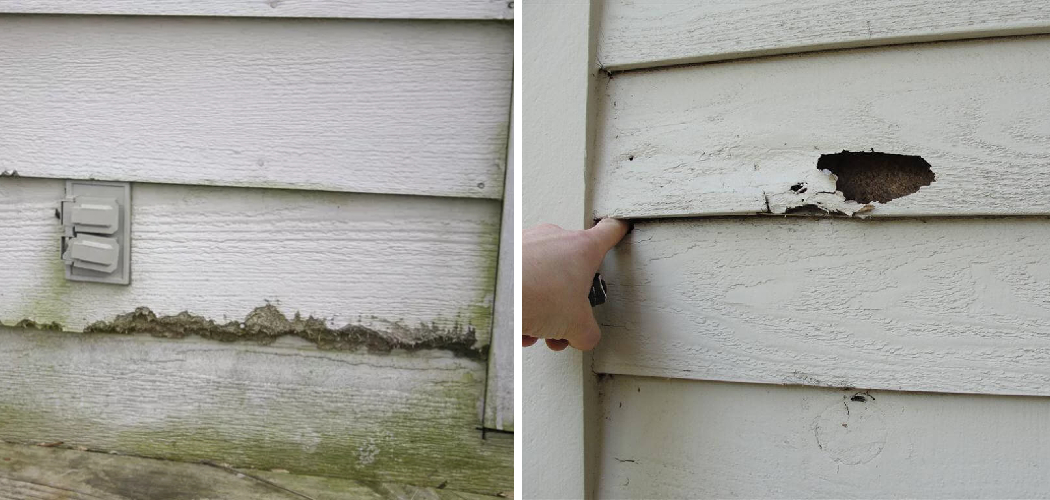Are you dealing with rotted wood siding on your home? It can be an irritating and time-consuming problem to fix, but it doesn’t have to put a dent in your wallet. Replacing sections of rotted wood siding is actually a relatively straightforward process, as long as you know what materials and procedures are involved.
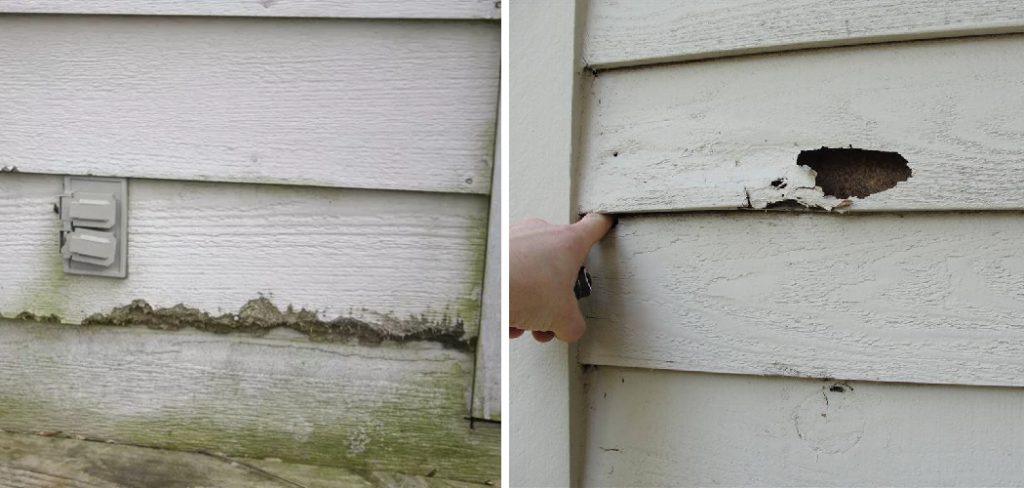
In this blog post, you’ll learn the steps required to identify any damaged areas and effectively replace them with minimal effort! So, read on if you want to learn exactly how it’s done!
Fortunately, replacing damaged wood siding is one of the easiest DIY projects to do yourself! In this blog post we will cover everything from finding replacement materials to correctly removing and reinstalling newly repaired pieces. Keep reading as we break down each step for how to replace rotted wood siding so that your home looks like its old self in no time!
Why May You Want to Replace Rotted Wood Siding?
1. To Protect Your Home From Further Water Damage
One of the main reasons to replace your rotted wood siding is to prevent further water damage from occurring. If the wood has already begun to rot, chances are that more water and moisture may have seeped into other areas of the house as well. Replacing the rotted section will help keep your home safe from additional water damage.
2. To Improve Energy Efficiency
Another great reason to replace rotted wood siding is to improve your home’s energy efficiency. Wood that has begun to rot can no longer keep moisture out, leading to drafts and air leaks in the home. By replacing the rotted wood with new, energy-efficient materials, you can help reduce your monthly heating and cooling costs while keeping your home comfortable all year round.
3. To Enhance Your Home’s Curb Appeal
Finally, replacing rotted wood siding can help to boost your home’s curb appeal. If your home is looking a bit worn and outdated, adding a new section of siding can instantly give it an updated look. Plus, taking the time to replace the rotted section now will help you avoid having to replace an even larger section later on, which can save you time and money in the long run.
How to Replace Rotted Wood Siding in 6 Easy Steps
Step 1: Gather All the Tools
The very first step is gathering all the tools you will need to replace rotted wood siding. This includes a hammer, pry bar, nail gun, circular saw, tape measure, and safety glasses.

Step 2: Prepare the New Piece of Wood
Now that you have your tools ready, take the new piece of wood and cut it down to size using a circular saw. Measure the old piece of siding, then use your tape measure with the measurements to guide you when cutting the new piece.
Step 3: Remove Old Rotted Wood
Using a pry bar and hammer, gently pull out any remaining pieces of rotted wood from around the area you need to replace. Be sure not to damage any of the surrounding wood that is still in good condition.
Step 4: Install the New Piece of Wood
Now that the old wood is removed, it’s time to install the new piece of wood siding. You will want to use a nail gun to secure the new piece into place. Make sure your nails are spaced evenly and driven into studs for maximum security.
Step 5: Finish the Edges
Use a handsaw and chisel to finish up the edges of the new piece of wood siding. This is an important step, as it will give your finished product a professional look.
Step 6: Paint and Caulk
The last step is to paint and caulk any remaining gaps or seams. Make sure that you use exterior paint and caulk that is designed to withstand the elements. Allow the paint and caulk to dry fully before moving on to any other projects.
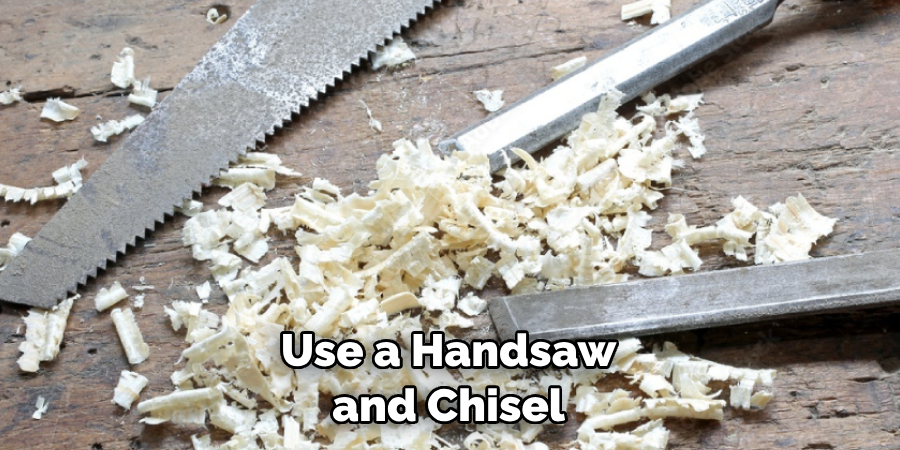
And there you have it! With these steps, you should now know how to replace rotted wood siding successfully in your own home. Be sure to take all safety precautions when working with power tools and always wear protective gear. With a little bit of patience and the right tools, you’ll have your siding looking like new in no time. Good luck!
Some Additional Tips to Replace Rotted Wood Siding
1. Do Not Cover Up Rotting Wood
Even if replacing the old wood siding is too costly, do not cover up the problem with new wood. This will just cause further damage to your home and eventually can lead to a large-scale repair project.
2. Inspect Regularly
Be sure to inspect your siding regularly for signs of rot or water damage. Make sure to check around windows and doorways where rot is more likely to occur.
3. Use Proper Materials
When replacing your wood siding, it’s important to use the proper materials for the job. Using pressure-treated lumber or other moisture-resistant products can help protect against future rotting or water damage.
4. Seal Gaps & Cracks
Gaps and cracks can easily form in wood siding over time, so it’s important to make sure that you seal them properly. Use caulk or high-quality sealants to fill these gaps and ensure a tight fit and long-lasting protection.
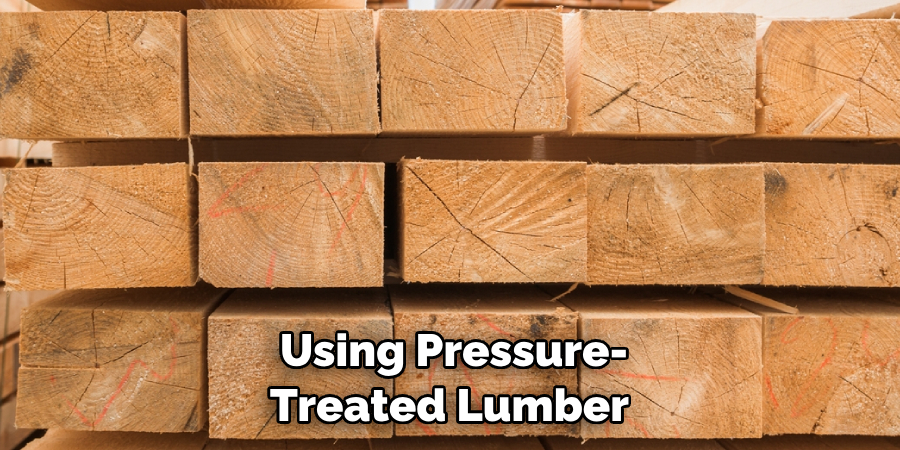
5. Paint or Stain Afterwards
Once your new wood siding is installed, it’s important to paint or stain the wood to protect it from further damage. This will help keep your siding looking great for years to come and can even add a bit of charm to your home’s exterior.
Following these tips will help ensure that you get the most out of your new wood siding and that it lasts as long as possible. Replace rotted wood siding before it causes further damage to your home and use the right materials, sealing methods, and paint or stain to get the job done right.
Frequently Asked Questions
What Precautions Should I Take When Replacing Rotted Wood Siding?
When replacing rotted wood siding, it is important to take safety precautions. Wear protective eyewear and gloves, as well as long sleeves and pants to protect your skin from splinters, debris, or other sharp objects that may be present. Make sure to also set up a scaffold or ladder firmly in order to get to the work area.
What Tools Do I Need To Replace Rotted Wood Siding?
You will need a few basic tools in order to successfully replace rotted wood siding. These include a hammer, pry bar, chisel, circular saw or jig saw, measuring tape, straight edge ruler, screwdriver, and drill with various screw bits. Additionally, you may want to have a caulking gun and utility knife on hand.
What Type Of Siding Should I Use To Replace A Rotted Wood Siding?
When replacing rotted wood siding, it is important to use a type of siding that is made of a material more resistant to water and decay than the original wood siding. Options such as vinyl, aluminum or composite siding are all popular choices for replacing rotted wood siding.
These materials are more resistant to moisture and decay than wood and will last much longer with regular maintenance. Additionally, these materials are relatively easy to install.
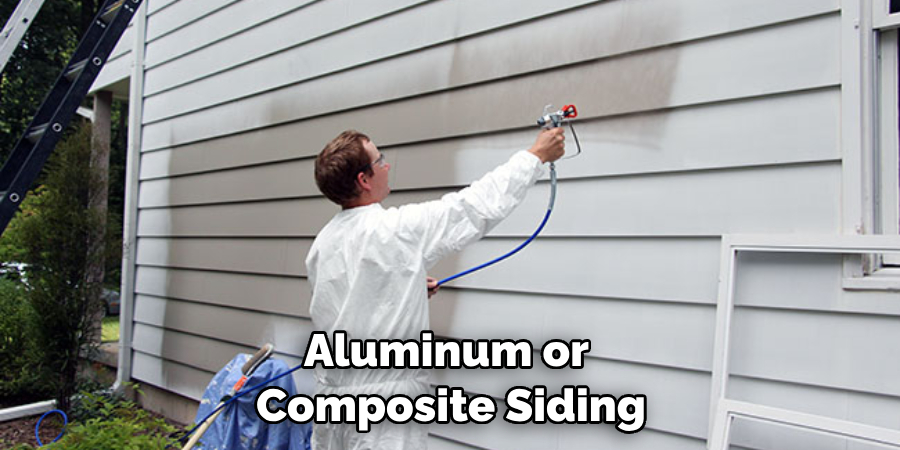
How Do I Prepare The Surface Before Replacing Rotted Wood Siding?
Before replacing rotted wood siding, it is important to ensure the surface is properly prepared. Remove all of the existing wood siding and trim down to the studs or sheathing with a pry bar. Next, inspect the windows and doors for any rotting wood, and remove or replace as needed. Finally, use a power washer to clean the surface of dirt and debris before replacing with new siding.
What Are The Steps Involved In Replacing Rotted Wood Siding?
The steps involved in replacing rotted wood siding are relatively simple. First, measure the area you plan to replace and purchase the necessary siding. Take extra care to ensure that you have enough material for the job.
Next, cut the siding down to size with a circular saw or jig saw, allowing at least 1/4 inch of overlap on all sides. Finally, attach the new siding in place using screws every 12-16 inches along the length of the siding. Use a caulking gun to fill in any gaps and seal the edges for further protection from moisture.
What Are Some Tips For Installing Rotted Wood Siding?
When installing rotted wood siding, there are a few tips to keep in mind that can help ensure success. Make sure to measure twice and cut once when cutting down the siding to size. Additionally, always wear protective eyewear and gloves when handling the materials.
Finally, take extra care to seal around windows and doors with weather-proof caulk or silicone for further protection from water damage. Following these simple tips will help ensure a successful installation of new rotted wood siding.
Conclusion
Ultimately, it takes some time and effort to properly replace rotted wood siding. However, if you’re motivated to take on the challenge yourself, you can save a lot of money by tackling the project yourself. When replacing rotted wood siding, start by removing any nails and trim that are connected to the section of siding that needs to be replaced.
Next, measure the area of new siding needed to make the replacement successful and source your materials accordingly.
Now you know how to replace rotted wood siding! Be sure install foam insulation when needed before you place and secure the new piece of siding with roofing nails or screws. Finally, use caulk or sealant between each course of siding which will help keep the elements out over time. With these steps in mind, anyone can successfully replace rotted wood siding themselves with a bit of dedication and proper planning!

